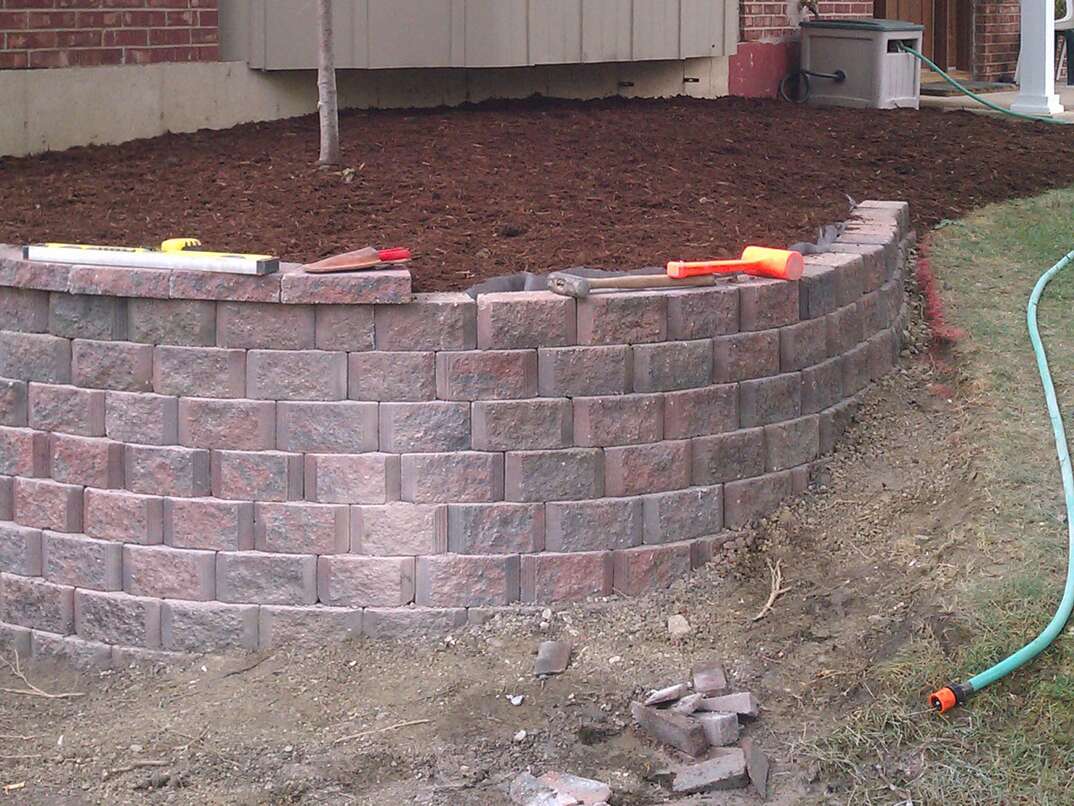- AppliancesElectriciansHVACLandscapingLocksmithPest ControlPlumbingRenovationRoofingT V RepairAll Home Improvement
- Car AccidentClass ActionCorporate LawCriminal DefenseDivorce LawEmployment LawFamily LawFinancial LawLegal AidMedical Injury LawyersMedical MalpracticeReal Estate LawWater Fire RestorationAll Legal
- InvestmentRetirementAll Finance
- Animal InsuranceAutoGeneral InsuranceHealth PolicyHome RentersAll Insurance
- DentalHealth SpecialistsAll Medical
- Animal CareVeterinaryAll Pets
- Auto GlassTowingAll Automotive
7 Tips for Building a Retaining Wall

Knowing how to build a block retaining wall can save you a lot over hiring a landscaper for the job. Retaining walls can be a godsend if you need to address drainage issues in your lawn, or if you’re looking to prevent soil from eroding into your yard. Some homeowners opt for retaining wall installation in their landscapes because they find retaining walls to be aesthetically pleasing.
Before you take on this DIY project, take a minute to browse these retaining wall installation tips.
Building a retaining wall requires proper planning, preparation and an abundance of elbow grease. Whatever your reason for installing one, these tips might help you feel more confident about your DIY abilities for the project.
1. Plan Before You Dig In
Careful and studious planning of your retaining wall is important and one of the most vital steps in the build. First off, you need to determine how tall and long the retaining wall should be, which is important for creating your project materials list. Next, determine if the retaining wall you plan to build meets all local codes. Be sure to check for buried utility lines prior to starting your project by calling 811 or your local before-you-dig number.
2. Prepare Your Site
Appropriate site preparation is important to the overall success of your retaining wall build. To make your retaining wall as strong as it can be, you need to install a packed gravel layer as a footing or base for your wall. Consider this the foundation that will prevent the layers of concrete blocks on top from falling over. Skipping this step is almost a surefire recipe for retaining wall failure.
Dig a trench that’s sufficiently deep, so that when you add 3 inches (8 centimeters) of gravel to the trench, the ground still comes around halfway up the blocks you intend to lay on the first layer. Ensure that the trench is completely level by using a standard level; correct any uneven areas before proceeding.
The trench should be around 20 inches (50 centimeters) in width with sufficient clearance behind the blocks of your retaining wall to lay around 3/4 inch (2 centimeters) of crushed gravel to allow proper drainage. Allowing for drainage of the soil is important because it prevents water pressure from building up behind your wall, which can ultimately lead to the wall collapsing.
Add packed gravel to the trench in layers of just an inch (3 centimeters) each, and use a rake to evenly spread the gravel. Use a hand tamper to tamp down each level of gravel before adding more. Your trench needs up to three of these layers of gravel.
3. Work in Levels
The actual wall should be built in levels, beginning with the blocks that you set into the trench. Ensuring that the first round of blocks is level is crucial. Once you have used a standard contractor’s level to make sure that the initial layer is level, you can make the assumption that each subsequent layer is level, too. As you complete each level of the wall, use a shovel to add more crushed gravel behind the blocks, and use a tamper to tamp down the gravel. Stabilize the blocks by placing dirt in front of them, then tamp down the dirt.
4. Cut Blocks as Needed
Keep in mind that you can cut concrete blocks if you find yourself needing to do so. A concrete saw equipped with a diamond blade or corundum works well for this purpose. But you can also use more basic tools if necessary — including a chisel and hammer. First, chisel grooves into the block all the way around, creating a scored line. Then, position the chisel appropriately, and strike it with the hammer. After a few strikes, the block will come apart.
5. Add Drainage
Once your second level of blocks is laid, you might consider installing a drain line for your retaining wall. To do this, just place a flexible or rigid PVC pipe with a drain sleeve cover behind the layer prior to adding the crushed rock and dirt for that level.
6. Secure the Blocks
To make sure your retaining wall is extra tough and sturdy, you need to glue down the blocks used for the last two layers. Use special landscape block glue or adhesive made for this purpose. Gluing down the layers will prevent the blocks from accidentally being knocked down. It’s inevitable that folks will end up sitting on your retaining wall, so you want it to be stable.
7. Know Your Limits
And finally, there’s a difference between knowing how to build a block retaining wall and actually having the time or motivation to do it. Moreover, if your lawn needs a retaining wall to prevent a serious problem, such as flooding or erosion, hiring a professional for the job may be necessary. At a minimum, doing so gives you peace of mind that the problem you’re looking to correct is actually corrected, minus the sweat equity of doing it yourself.
Elocal Editorial Content is for educational and entertainment purposes only. Editorial Content should not be used as a substitute for advice from a licensed professional in your state reviewing your issue. Systems, equipment, issues and circumstances vary. Follow the manufacturer's safety precautions. The opinions, beliefs and viewpoints expressed by the eLocal Editorial Team and other third-party content providers do not necessarily reflect the opinions, beliefs and viewpoints of eLocal or its affiliate companies. Use of the Blog is subject to the
Website Terms and Conditions.The eLocal Editorial Team operates independently of eLocal USA's marketing and sales decisions.

